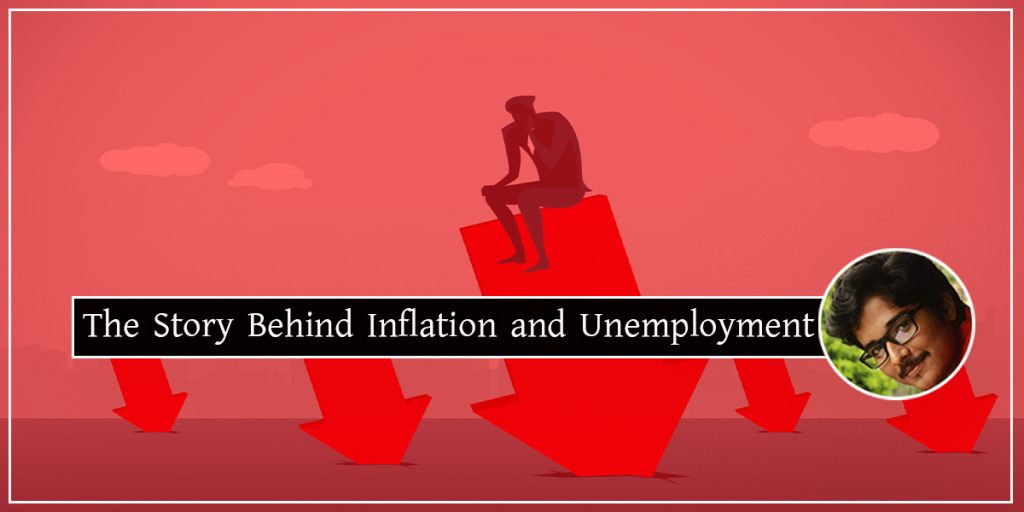
CMIE data shows that India’s unemployment rate rose from 7.60 per cent in March to 7.83 per cent in April. In Urban areas the unemployment rate rose to 9.22 per cent in April from 8.28 per cent in March whereas in rural areas it fell from 7.29 per cent in March to 7.18 per cent in April. According to the same data, large numbers of people are not even looking for a job, which might be because of disappointment and depression of trying and not getting a job after many attempts. It is also evident that this huge increase in unemployment rate is not only because of pandemic but, there is a bigger picture behind this scenario. Unveiling the curtains will make it clear. CMIE said that between 2017 and 2022, the overall labour participation rate dropped from 46 per cent to 40 per cent. The dark side of the story begins now. This decrease in labour force participation rate, which is because of disappointment of not getting a job actually decreases the labour force and thus decreases the unemployment rate. The disappointed ones are counted as ‘out of labour force’ and not as unemployed. The data we get to see about unemployment can thus be very well manipulated and this does not show the full story about labour market stress in our country. The problem is much bigger than what we get to see. Alongside, there are other worse problems related to employment. Only about 10 per cent of labour force is in the organized sector. Most of them are employed in the informal sectors. Contractual and temporary jobs are significantly increasing in numbers. Start ups have emerged as a major driver of gig economy in India. Gig workers are mostly unsatisfied with their benefits and work pressure. The informal sector is hit badly because of these reasons and it is really difficult to quantify the stress in job market. The role of government had been worse in the recent years in working as an employer of last resort. Back-door admission in jobs have become very common. Twelve million people have applied for only thirty-five thousand vacancies at Indian Railways for clerical jobs this year. Job loss had been massive in the pandemic years. Millions of people got unemployed. Is the government unaware of what the nation is going through? Obviously not. When we talk about unemployment, we should bring in inflation rate which is soaring high in the recent times. A.W. Phillips, a renowned economist stated that inflation and unemployment have an inverse relationship. In India we have reached a stage of stagflation, that is, simultaneous increase in inflation and stagnation of economic output.
Moody’s slashed India’s economic growth projections from 9.1 per cent earlier to 8.8 per cent. A terrific rise in price in all items from fuel to vegetables and cooking oil increased Wholesale Price Index to a record high of 15.8 percent in April and retail inflation to a near eight years high of 7.79 per cent. As a result of this hyperinflation Reserve Bank of India held an unscheduled meeting to raise the interest rate by 40 basis points to 4.40 percent, which is obviously a remedy to control inflation rate. In simple terms, increasing interest rate will decrease money supply in the economy, which will result in lowering inflation rate. Central banks have always been much more interested in controlling inflation rate than unemployment. There is a specific reason behind this.
In capitalist mode of production, the government is merely a puppet of large industrialists. Industries increases profit either by reducing wages or by making a worker do more intense work. But as times changed, they have become more interested in financial markets. Profit generated by investing in these financial markets is another way to earn for industrialists. In this age of liberalization this has become even more dangerous. After the 2008 Financial Crisis people got to see what speculation can actually cause. Even academicians promoted large scale deregulation. But profit is what an industrialist seeks and hence the government always tries to save the financial markets. In the trade off between inflation rate and unemployment, governments of various capitalist nations have gone in favour of controlling inflation rate. Increase in number of gig workers have endorsed this. Deviating the minds of people is what they try to do. The government always focuses more on inflation rate because high inflation rate can affect financial markets and can lead to huge losses for investors. Controlling inflation rate on the other hand can increase unemployment. But why should the government of Ambanis and Adanis even think of reducing unemployment when reducing inflation is their sole aim and manipulating unemployment rate becomes pretty easy? As Prabhat Patnaik said brilliantly, “…. apart from the produced surplus value, there is an additional source of income for the financial oligarchy that comes from primitive accumulation of capital. For this reason unemployment is less important from the point of view of this oligarchy than inflation; and this is duly reflected in government policy which privileges the latter over the former.”



